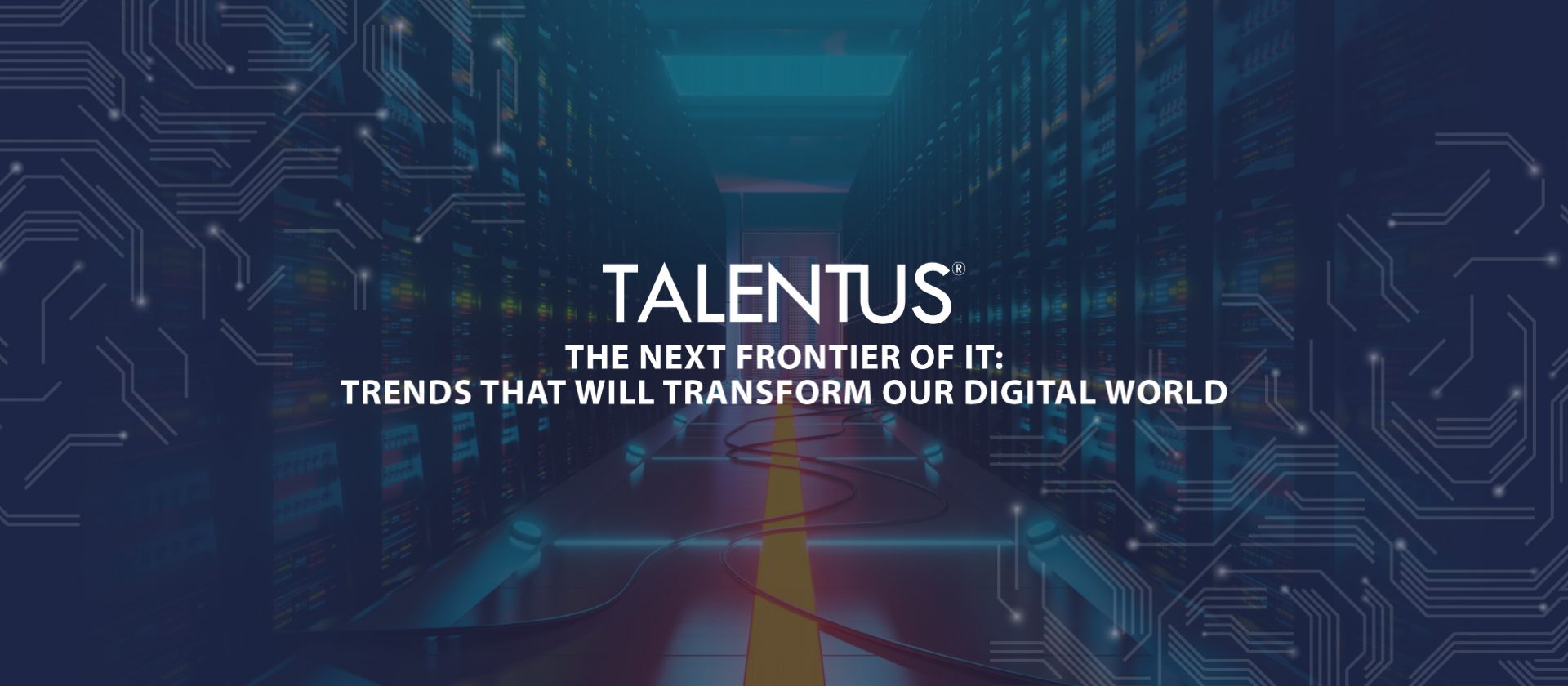IT is the nucleus of life in the digital revolution, whether it be innovative or disruptive in nature, across industries. Information Technology deals with tools, systems, and processes that enable us to capture, manage, and apply information it’s growing with unprecedented speed. In 2022 alone, the entire global market for IT reached an incredible $9.48 trillion and keeps on growing. Looking ahead, projections point to an even more exciting future.
It is suggested that the market will grow rapidly, an estimated 11% annually, and reach a staggering $17.74 trillion by 2028. Key improvements in AI, cloud computing, and cybersecurity are going to fuel technology at a rate that will definitely redefine how we live and work. But with what, exactly? Tomorrow’s world is carved out in new emerging trends. Let’s dive into what’s on the horizon for IT.
Artificial Intelligence
Artificial intelligence has moved very far from what it could perform at its inception. From simple tasks like calculations, AI has gone to higher states of pattern recognition, speech recognition, and even high-level decision-making in business. What started with an estimated $5.3 billion in 2013 has ballooned into a whopping $207.9 billion, just showing how AI has been transformational in the last decade.
Looking into the future, AI is going to be integrated into almost every form of our daily life. By the year 2030, it is going to add power to all the economies in the world, and China will be leading in this regard. But this great acceptance of AI also comes with several questions, particularly regarding job displacements. Since AI would continue to do those tasks that have been traditionally performed by humans, millions of jobs could be replaced, especially in transport and other areas involving manual labor. That said, AI will also create new opportunities, and demand for jobs in the development of AI, machine learning, and data science is likely to boom.
The challenge ahead will be to get the right balance—how to maximize the benefits of AI while mitigating societal and economic implications in terms of job displacement.
Cloud Computing
Cloud computing has already transformed the ways businesses store and obtain data. Organizations no longer depend on expensive on-site hardware and servers to house their information; nowadays, they are dependent on AWS and Microsoft Azure services for the same purpose. They eliminate infrastructure expenses while being scalable: companies pay only for what they use and easily adjust as they grow.
Cloud computing is, in fact, headed towards advanced architectures such as hybrid clouds and edge computing. It is said that by 2025, 80% of all companies will have moved to cloud-based systems. Cloud computing is also getting a big boost from advancements in AI and machine learning, which aid in better data analysis and detection of cybersecurity threats. Cloud security environments, along with a volume of data increasing at an exponential rate and cyber threats in vogue, stand as one of the top priorities. Data encryption, multi-layer access controls, and continuous monitoring are the mere minimum adequate solutions in place to protect sensitive information.
The emergence of quantum computing now is also stirring interest in cloud services that offer quantum capabilities, as this may open up new avenues for finding solutions to complex problems in science, finance, and research.
Advanced Cybersecurity Measures
Cybersecurity has never been more critical in this digital transformation journey. From the ever-increasing sophistication of cyberattacks to crypto crimes that are expected to cost the world $30 billion by 2025, robust cybersecurity has become much-needed protection for businesses and governments alike.
Advanced cybersecurity is the difference between having a simple door lock and moving to a high-tech, biometric fingerprint lock. Firewalls, antivirus, encryption, and multi-factor authentication are just some of the tools employed in the protection of systems from vicious and damaging threats. As threats become increasingly complex, cybersecurity technologies must evolve in their component features to stay ahead of the curve.
Because of this, the need for skilled cybersecurity professionals has never been greater. Globally, investments in awareness and training in cybersecurity are expected to surpass $10 billion by 2027. Added to this, there is an encouraging modern trend within the workforce: in 2022, women comprised 25%, compared with just 10% in 2013. By 2031, women will make up 35% of cybersecurity roles, a truly indicative mark of diversity in the field.
What’s Next in IT?
From mainstream AI to cybersecurity, the future of IT is bright. Unable to predict all the twists and turns, very clear though is the fact that technology will keep on reshaping not only the way businesses do business but how we live our lives.
Glossary of important terms
- Talentus: a global company that provides US companies with reliable near-shore IT talent up to their necessities.
- Information technology (IT): is the use of computers, storage, networking and other physical devices, infrastructure and processes to create, process, store, secure and exchange all forms of electronic data.
- Digital transformation: is the integration of digital technology into all areas of a business, fundamentally changing how you operate and deliver value to customers.
- IT services (technology services): are a range of activities involving the use of information technology to support, manage, and improve the operations of a business or organization.
Previous blog: 5 Main Benefits of IT Near-shore Outsourcing
